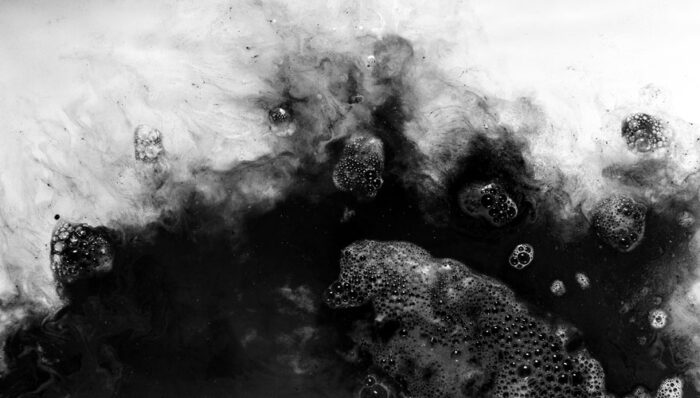
The reduction of water consumption and focus on wastewater treatment is a growing trend in the pharmaceutical industry. With several motivating factors influencing this prioritization, wastewater treatment has become an increasingly critical part of pharmaceutical manufacturing business operations over the last decade.
Fortunately, pharma can employ different strategies to go beyond compliance, and begin the process of positively impacting global water quality. Here we examine the factors contributing to the prioritization of improved wastewater management, as well as some of the solutions available to drug production facilities.
Improved water quality and water preservation is needed. According to the 2017 United Nations World Water Development Report, more than 80 percent of all the wastewater from industry, homes, cities and agriculture is released into the environment without adequate treatment and flows back into the ecosystem via lakes, rivers, and other bodies of surface water. This process repeats every day across the planet, polluting the environment while losing valuable nutrients and other recoverable materials in the process.
Wastewater produced in pharmaceutical manufacturing, in particular, often contains high levels of contaminants. A study by the U.S. Geological Survey (USGS) showed higher concentrations of pharmaceuticals in the discharge from treatment plants that received wastewater from drug manufacturers. Effluent received from pharmaceutical facilities contained levels of seven active pharmaceutical ingredients (APIs) that were 10 to 1,000 times higher than effluent from treatment plants that didn’t receive pharma wastewater.
Furthermore, water is a finite resource with increasing international demand. The goal of the United Nation’s 2030 Agenda for Sustainable Development is to cut the proportion of untreated wastewater in half and increase safe water reuse by 2030. Guy Ryder, the Director-General of the UN International Labor Organization (ILO) and the Chairperson of UN-Water, believes that in order to achieve this goal, there must be a commitment to improve the management of wastewater from both the business community and the general public. With water being an integral component of the pharmaceutical manufacturing lifecycle, drug production facilities can directly contribute to improved water stewardship.
Water consumption is high in pharma. Of course, the ultimate motivator is almost always related to cost. The pharma industry uses a tremendous amount of water for manufacturing. According to 2017 research from the American Council for an Energy-Efficient Economy, the estimated water use in U.S. chemical manufacturing — which includes the production of medicines, medicinal and botanical products, in-vitro diagnostic substances, and biologics — is the third greatest, in terms of water withdrawal, behind pulp and paper and primary metals. The chemicals subsector, however, ranked highest in consumption.
With the average monthly cost of water on the rise in many major U.S. cities and water demand expected to exceed the current supply by 2030, pharma manufacturers have a financial and environmental responsibility to adopt a more sustainable approach.
Efficient compliance management is a financial imperative. Compliance with ever-tightening federal regulations for wastewater treatment, handling and disposal — such as the Clean Water Act (CWA), the Resource Conservation and Recovery Act (RCRA) and the Safe Drinking Water Act (SDWA) — requires pharma companies to be focused on the wastewater issue. The federal wastewater pretreatment regulations for pharma, which are addressed in 40 CFR Part 439, establish standards for fermentation products, extraction products, chemical synthesis products, mixing/compounding and formulation, and research. There are regulations at the state and local level that companies must adhere to as well. With some pharma manufacturing shifting production to Asia where less stringent regulations are allowed, U.S. pharma manufacturers who find ways to create compliance management efficiencies will position themselves for a more profitable future.
Positive environmental practices create a positive corporate culture. These days, promoting a “green” operation by putting a priority on environmental awareness and sustainable operations will translate to happy workers, loyal customers and satisfied investors. Additional motivating factors that are potential drivers for recycling pharma manufacturing wastewater include strengthening a company’s public image and adhering to ISO 14001 initiatives.
Strong financial assurance policies define ownership of environmental risk. In a report from Canada’s Ecofiscal Commission, an advocacy group that generates practical fiscal solutions for growing economic and environmental prosperity, the organization stresses the importance of putting a price on environmental risk in order to make disasters less likely. From a policy perspective, managing risk means getting incentives right.
According to the commission, gaps in existing policies mean that companies are not always held fully accountable. These gaps can shift risk — and any related costs of environmental damage — away from manufacturers and onto taxpayers. When companies do not bear the full cost of potential damage, they have less incentive to reduce risk.
Better financial assurance policies — such as cash deposits, insurance, and industry funds —address this problem by putting a price on environmental risk. They create incentives for pharma manufacturers to reduce risk and ensure that taxpayers do not end up bearing the costs of environmental damage, should those unlikely disasters occur.
Wastewater treatment is an increasingly critical aspect of responsible environmental practices in pharma manufacturing.
Regardless of the motivation, it makes sense for pharma companies to adopt a formal wastewater treatment and reuse policy, especially from a monetary standpoint because wastewater disposal is expensive. Pharma manufacturers who do not treat and recycle their wastewater must pay for handling, trucking and treatment by their local Publicly Operated Treatment Works (POTW). These costs can vary based on local water supplies, fuel prices, trucking prices, and the edicts of the POTW. Adding to the expense is the cost of clean water required to replace the initial volume. Establishing an in-house wastewater treatment and recycling process will allow pharma manufacturers to address rising operational costs while increasing profitability.
Recycling and reusing fluids internally is proven to reduce maintenance, decrease haul-away costs, and prolong the usage of fluids. Having a water or wastewater treatment process in place means when the time comes to dispose of wastewater and fluids, companies will have a lower volume to discard, or a concentrated stream they can treat themselves for lower cost handling at the POTW.
Compared to other industries, pharmaceutical wastewater treatment is often more intensive. Fortunately, there are a variety of in-house wastewater treatment processing options available. Each process is driven by a modular equipment solution that performs a specific type of treatment. In most instances, pharmaceutical manufacturers experience a quick return on investment after adopting an in-house water treatment program.
Here are five common solutions pharma manufacturers are using to take control of their wastewater treatment:
1. Ultrafiltration (UF): This pressure-driven process uses a membrane to remove emulsified oils, metal hydroxides, emulsions, dispersed material, suspended solids, and other large molecular weight materials from wastewater and other solutions. UF excels at the clarification of solutions containing suspended solids, bacteria, and high concentrations of macromolecules, including oil and water.
UF systems are designed to reduce oily water volumes by as much as 98 percent, without the use of chemical additives. When calculating both heating and disposal expenses, companies have seen a reduction of wash water and detergent costs by as much as 75 percent and a reduction in waste disposal costs by as much as 90 percent. For these reasons, UF membrane technology is quickly becoming the process of choice over conventional filtration methods.
2. Vacuum evaporation and distillation: Evaporation is a natural phenomenon and a clean separation technology recognized as a Best Available Technique (BAT) in several wastewater treatment processes. Because it removes the water from the contaminants, rather than filtering the contaminants from the water, it is distinct from other separation processes.
No other technology can attain such high water-recovery and concentration rates as vacuum evaporators, which accelerate the natural evaporation process to treat and distill pharma wastewater amounts from 1-120 tons per day. They are capable of achieving residual total solids concentrations of more than 85 percent.
The three primary vacuum evaporators are:
Heat pumps — Flexible and versatile with low electrical energy consumption and superior reliability.
Hot water/cold water — Reduce operating costs by utilizing existing excess hot water/steam and cooling water.
Mechanical vapor recompression — Engineered for the treatment of large wastewater flow rates with low boiling temperatures for reduced energy consumption.
With some pharma manufacturers shifting production overseas where less stringent wastewater regulations are allowed, drug developers who establish compliance management efficiencies will position themselves for an improved bottom line.
3. Reverse osmosis systems: Reverse osmosis (RO) technology removes dissolved solids and impurities from water by using a semi-permeable membrane, which allows the passage of water but leaves the majority of dissolved solids/salts and other contaminants behind. The RO membranes require a greater-than-osmotic pressure and high-pressure water to achieve the desired result. The water that passes through the RO membrane creates the permeate, and the dissolved salts that are rejected by the RO membrane create the concentrate.
A properly designed and operated RO system can remove up to 99.5 percent of incoming dissolved salts and impurities, as well as virtually all colloidal and suspended matter from the most challenging waste and feed water applications. For some applications, RO technology is the final process after ultrafiltration or the chemical treatment of waste and feed water.
4. Oil water separators: In this wastewater treatment solution, a down-flow gravity coalescing method is used to separate oil from water to less than 15 ppm. The oil/water mixture is pumped via a floating skimmer or is gravity fed into a separator, where free and mechanically dispersed oil is removed from the influent. Separated oil is automatically gravity discharged to a waste container. The clean water is discharged by gravity or through an optional discharge pump to the sewer, or back into the process. Oil water separators reduce haul-away costs up to 90 percent, decrease water consumption, and increase life of soluble oils, washwater, rinse water and pressure wash-down water (or process water).
5. Vacuum filters: Capable of continuous operation, vacuum filtration systems can eliminate significant downtime. Virtually maintenance-free and delivering high-sludge-volume elimination, these systems will also deliver lower production costs. Disposable media vacuum filters utilize a vacuum chamber to draw fluids through a disposable filter media. By applying the proven principle of optimal filtration through contaminate or sludge build-up, a filter cake forms on the media. These units are capable of impressive flow rates of up to 2,000 GPM.
Semi-permanent vacuum filters further reduce operation costs by eliminating the need for disposable media. Back flushing with clean fluid keeps the filter clean without requiring large volumes of air. The back-flushed solids drop from the filter element and settle into a tank, where they are removed via a chain dragout/flight arrangement. These units require minimal floor space and are completely self-contained, simplifying maintenance and operation.
As drug developers intensify production efforts to meet the growing demand for pharmaceuticals, advancements in process water and wastewater management practices must also occur to protect both the environment and the bottom line. If practices go unchanged, the industry’s high rate of water consumption will contribute to a global water shortage. Furthermore, with evidence of higher APIs in effluent at wastewater treatment plants that receive wastewater discharges from pharma manufacturing companies, a demand for increased transparency of wastewater management practices is almost a certainty. Drug producers that harness the potential of on-site wastewater treatment and recycling will simultaneously improve their sustainability practices while boosting their competitive advantage.
Tim Hanna is PRAB’s Vice President of Business Development.

This editorial was originally published on pharmamanufacturing.com.